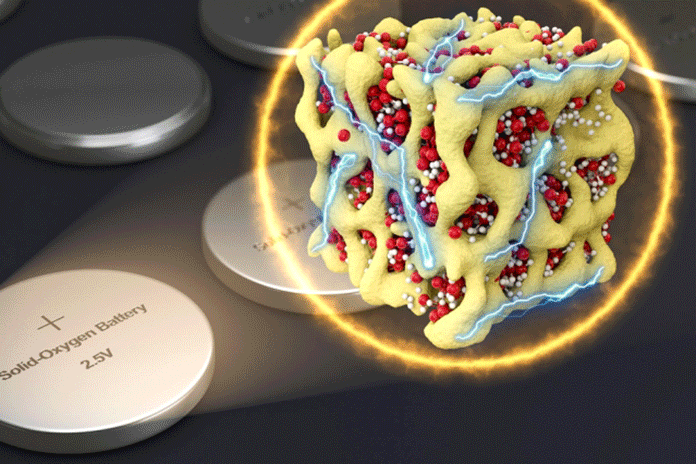There are lots of lithium batteries available in the market now, But as I said earlier, these lithium ion batteries have some major drawbacks. Thus, they require some expensive additional components to pump oxygen gas in and out in an open-cell configuration that is very different from conventional sealed batteries. By overcoming all of these lithium ion batteries drawbacks, scientists have developed Nanolithia cathode battery. This new alternative of battery chemistry could be used in complex, fully sealed battery and gives a similar theoretical performance as a lithium battery.
This new Nanolithia cathode battery has electrochemical reactions appears in lithium and oxygen during charging and discharging. But, it appears without allowing the oxygen to go back to gaseous form. Thus, oxygen stays inside solid and converts directly between its three redox states. This is done while enclosing in the form of three different solid chemical compounds. Those 3 compounds are Li2O, Li2O2, and LiO2, which are mixed together in the form of a glass. This decreases the voltage loss, for example from 1.2 volts to 0.24 volts. Thus only 8 percent of the energy is turned to heat.
Li, the Battelle Energy Alliance Professor of Nuclear Science and Engineering at MIT, said, ” This means faster charging for cars, as heat removal from the battery pack is less of a safety concern, as well as energy efficiency benefits.”
When a chemical reaction is entangled in charging and discharging, it converts oxygen between gaseous and solid forms. Then the material goes through large volume changes that distract electrical conduction path in the structure by sharply restricting its lifetime.
Producing minuscule particles at small scale is the secret of this new creation. Minuscule particles consist of lithium and oxygen in the form of glass, which is enclosed tightly inside cobalt oxide matrix. Cobalt oxide matrix is a sponge-like material with pores just a few nanometres across. Scientists have mentioned this particle as nanolithia. In such way, changes between those compounds occur.
Scientists equipped these nanolithia particles in cobalt oxide matrix because it is unstable. The matrix then preserves this material and acts as a catalyst for their conversions.
This new battery will automatically protect from overcharging. When the battery gets overcharged, the chemical reactions naturally limits itself and reactions moves to a different form.
Li says, “With a typical battery if you overcharge it, it can cause irreversible structural damage or even explode. But with the nanolithia battery, we have overcharged the battery for 15 days, to a hundred times its capacity, but there was no damage at all.”
While testing through 120 charging and discharging cycles, the battery shows only 2 % loss. This indicates it has a long useful lifetime.
Characteristics of Nanolithia cathode battery:
- Could be installed and operated just like conventional solid lithium-ion batteries.
- It could be suitable for existing installations or conventional battery pack designed for cars, electronics, or even grid-scale power storage.
- Store double amount of energy for a given cathode weight.
- Overall, the new battery system is very scalable, cheap, and much safer than lithium-air batteries.
